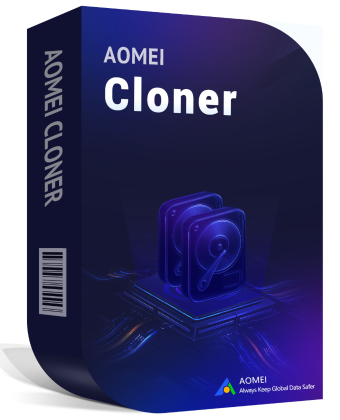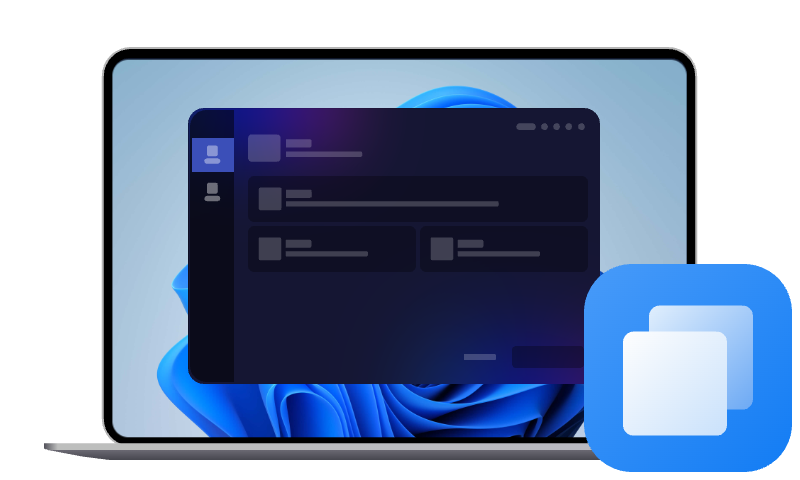How to Use DiskGenius to Clone Disk: Guide & Alternative
Learn how to clone your hard drive step-by-step using DiskGenius for easy data transfers or backups. If DiskGenius isn't right for you, we'll also show you a great alternative option.
Disk cloning is more than just a data transfer—it’s about preserving the integrity of your system, boosting performance, and ensuring business or personal continuity. When it comes to choosing the right tool, DiskGenius stands out for its reliability and flexibility. However, DiskGenius clone fails sometimes, so we also recommend the best alternative tool.
In case DiskGenius clone fails, try another user-friendly cloning tool.
How to Use DiskGenius to Clone HDD to SSD
Upgrading from HDD to SSD is one of the most effective ways to boost your system’s performance. Below is a step-by-step guide on how to clone your HDD to an SSD using DiskGenius.
Step 1. Prepare Target Drive
Before launching DiskGenius, make sure everything is physically and digitally ready:
- Connect the SSD: Use a SATA-to-USB cable or connect the SSD internally. Make sure it’s recognized in Windows Disk Management.
- Check SSD Capacity: Your SSD should be large enough to hold all used data from the HDD. If not, you’ll need to delete or transfer non-critical files before proceeding.
- Backup Your Data: The target drive will be overwritten during cloning. Backup important files to an external drive or cloud storage first.
Step 2. Start the Disk Clone Operation
1. Download DiskGenius from the official website, install and launch it. Then click Tools in the top menu and choose Clone Disk.
2. In the dialog box that appears, select the HDD you want to clone and click OK.
3. Select your SSD as the target disk and click OK.
4. Choose a disk clone method and click Start.
- Copy all sectors: Copy all sectors of the disk to destination disk without considering whether sectors are in use or not.
- Copy all valid sectors according to the layout of the file system: Copy all valid data of the source disk to corresponding partitions on the destination disk in line with the layout of the file system. Cloning process gets rid of invalid sectors, so it is quite fast.
- Copy all files: Copy all the data of source disk to destination disk by analyzing file system layout of the source disk. This is the only available option when the target disk is smaller than the source disk.
5. Click OK button to continue if you are sure data on destination disk has been backed up.
6. Choose the way to clone disk.
Hot Migration can copy the disk by way of taking snapshots, and it does not require to restart system even when cloning system disk.
Lock and Execute means partitions on source disk will be locked temporarily and other programs cannot access them during disk cloning process.
7. Wait for the clone process to finish and click Complete button once it is done.
Step 3. Configure BIOS/UEFI
If you're cloning your system drive and plan to boot from the SSD:
1. Restart your PC and enter BIOS/UEFI (usually by pressing Del, F2, or F12 during boot).
2. Set the SSD as the first boot device.
3. Save changes and exit. Your system should now boot directly from the SSD—faster, quieter, and more responsive.
Note: After confirming everything works properly, keep the old HDD as a backup or reformat it and use it as secondary storage.
Troubleshooting DiskGenius Clone Issues
While DiskGenius is generally stable and user-friendly, you may encounter errors when cloning a disk with DiskGenius. Here are some common problems and how to fix them.
1. DiskGenius Cannot Detect the Target SSD
🧐Symptoms: Your SSD doesn't appear in DiskGenius or shows as "Unknown."
🛠 Fixes:
- Make sure the SSD is properly connected via SATA or USB.
- Open Disk Management (Windows + X > Disk Management) to see if the SSD needs to be initialized.
- Try switching USB ports or using a different cable.
- Update SSD drivers or install the manufacturer's utility.
2. Cloning Fails Midway
🧐Symptoms: The cloning process stops abruptly with an error message.
🛠 Fixes:
- Check both disks for bad sectors using DiskGenius or CHKDSK.
- Use the "Copy all files (used sectors only)" option instead of sector-by-sector.
- Close background apps that might be accessing the disk.
- Reboot and reattempt the clone.
3. SSD Shows Less Space After Cloning
🧐Symptoms: SSD capacity appears smaller than expected after cloning.
🛠 Fixes:
- Use DiskGenius or Disk Management to extend the partition to fill unused space.
- Check if cloning was done using sector-for-sector with an exact partition copy.
Best Alternative to DiskGenius for Windows PC and Server
While DiskGenius clone disk is a reliable solution for many users, it's not always the best fit—especially if you're looking for SSD optimization option or seamless server support. If you're searching for a powerful alternative for both personal and business use, the best disk clone software - AOMEI Cloner deserves a try.

- It enables you to clone your OS, entire disk, or selected partitions with just a few clicks.
- It clones your system while Windows is running—no need to shut down.
- You can adjust partition sizes during the cloning process to better utilize available disk space. You can also convert the partition style of the destination disk if you want.
- It offers the SSD Alignment option to align partitions for optimal SSD performance and lifespan.
- It fully supports Windows PC systems (Windows XP to 11) and Server systems (Server 2003 to 2025).
Download AOMEI Cloner and follow the instructions below to clone HDD to SSD:
1. Install and run AOMEI Cloner. In the main interface, go to Clone on the left panel. Then select Disk Clone.
2. Pick the HDD as Source Disk and choose the SSD as Destination Disk.
⚠️ Warning: All data on the SSD will be overwritten. Double-check before proceeding.
3. Before starting, check the box SSD Alignment to improve performance and longevity of the SSD. Then click Start Clone to launch the process.
Note: You can use Sector-by-Sector Clone if you want to copy all sectors, including unused space. You can also use Edit Partitions to adjust partition size or convert partition style of the destination disk.
Wrapping Things Up
Now you know how to use DiskGenius to clone disk for system upgrades, backups, and data migration. Powerful as it is, DiskGenius clone fails sometimes. If you need a powerful and user-friendly alternative for disk cloning, try AOMEI Cloner. It works well on all Windows systems and is compatible with various disk types. You can use it to clone Windows to NVMe SSD, etc. Try it now to discover more!

